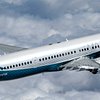If you are a frequent traveler who has enjoyed a few cross Atlantic voyages, then you know that the airplanes of the past that tackled these routes were the widebody jumbo jets that could send quite a few passengers across the ocean in one trip. However, this trend is changing. Starting in the mid 2000's, many airlines started switching to narrowbodies, including the Boeing 757, Boeing 737 MAX and the Airbus A321, to make these flights. As airplane technology continues to change and evolve, the switch to smaller planes is expected to become more prominent. Here’s a look at some of the reasons behind this change.

Extended Range of Today’s Narrowbodies Makes This Possible
Today's modern narrowbodies were built with longer range as a goal. The 737 MAX, for instance, now has enough range to make it from North America to a variety of locations within Europe without a stop. Previous 737's could not do this task because they were constructed of heavier materials and had less efficient engine technology, Both Air Canada and Norwegian Air Shuttle have been using this new narrowbody on some of their trans-Atlantic flights since 2017. Others, such as WOW and Primera Air, are bringing the Airbus A321 to their trans-Atlantic flight rotations.
Greater Fuel Efficiency
A smaller airplane with new technology jet engines takes less fuel to fly. The only way to make the larger, widebody planes economical on these flights is to fill them almost to capacity. Often, depending on the route, this is not always possible. Narrowbodies cost less to fly across the Atlantic because they weigh less, hence less fuel burn. This makes them a popular choice for airlines that struggle to fill a widebody profitably.

Opening New One-Way Routes
Using these smaller planes for trans-Atlantic flights, airlines will be able to open new routes. Passengers will now be able to leave smaller North American cities and land in some of Europe’s top airports. They may also serve smaller cities on both sides of the Atlantic without the need to stop and change planes in a large hub city such as New York or London. Examples include Air Canada's Halifax to London and Norwegian's Providence to Edinburgh. Smaller airports, generally, do not have proper services for larger planes, nor do they have as many passengers.

Increased Efficiency at the Sacrifice of Passenger Comfort
The change to narrowbodies on flights crossing the Atlantic brings several benefits to carriers, but what about passengers? These smaller airplanes have significantly less space than their larger counterparts. With just one aisle, they have less room for passengers to get up and spread their legs. They also have fewer lavatories and other amenities. Most of them do not have lie-flat business class seats for passenger comfort. Of course, passengers are sacrificing their comfort for more direct flights to their actual destinations. Some may find that a bit of creature comfort is worth sacrificing for shorter flights and fewer connections.
While only time will tell if this trend is a positive one or not, it is certain that the trans-Atlantic flights of tomorrow are more likely to be on a smaller plane, not a widebody jumbo jet. Consequently, passengers will need to adjust their thoughts of what long distance flights will look like as a result. Some might say that it is a step backward to earlier days of jet travel with a more efficient technologically advanced twist.










